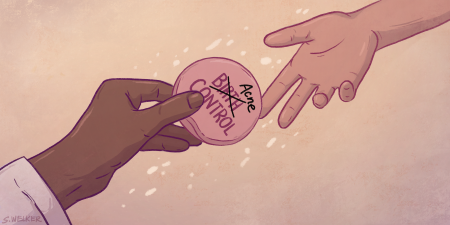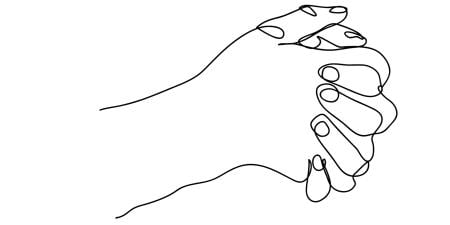Before medical school, I studied theology at Harvard Divinity School and served as a chaplain-intern at Boston Children’s Hospital. Those experiences shaped the way I approach medicine and patients today. In particular, I acquired a newfound appreciation for how hospital hallways are places where values intersect and where profound decisions can be shaped by individuals’ religious and spiritual beliefs.
Today, clinical chaplaincy remains an underutilized resource in health care, as patient spirituality continues to be an area that clinicians do not discuss as often as they should.1 This finding is disappointing, given the potential benefits of integrating patient religion and spirituality into clinical practice by improving empathy, building trust, and understanding behaviors. In looking at the state of religiosity of America, a Pew Research Center report found that 70.6% of US adults identified as Christian in 20142; the report also revealed trends toward religious diversity, with small increases from 2007 to 2014 in the percentage of the population identifying as Muslim and Hindu and a 6.7% increase in the unaffiliated or “nones,”2 some of whom may identify as “spiritual but not religious.”3 Acknowledging the moral underpinnings (spiritual or religious) that drive certain care-seeking behaviors—from end-of-life care to contraception—is critical in achieving a more holistic medical practice. Moreover, awareness of our patients’ spiritual or religious beliefs helps us to be more aware of our own motivations, as spirituality and religion are important components that shape behaviors of many clinicians.
Educators across the country have noted the need to incorporate resources into the curriculum to help medical trainees better understand their patients’ spiritual backgrounds. In recognition of the role that spirituality plays in the health of people, Christina Puchalski founded the George Washington Institute for Spirituality and Health (GWish) in May 2001 with the aim of bringing increased attention to the spiritual needs of not only patients and families but also health care professionals.4 In this issue, Aparna Sajja and Puchalski expand on the mission of GWish, writing about the importance of recognizing the role that spirituality plays in health and sharing curricular steps that Puchalski and her institution have taken to educate trainees about that role. This interplay between medical and spiritual practices is illustrated brilliantly by Ariana Ellis’s drawing of a patient’s hands: one holding pills and, the other, a rosary. And Karl Lorenzen’s illustrations are aesthetic explorations of spiritually relevant features of embodiment—fear and suffering—that are also considered through the lens of the four principles: beneficence, nonmaleficence, respect for autonomy, and justice.
Of course, religion and spirituality are important not just to patients but also to clinicians. Respecting the background of medical trainees when navigating discussions of morally sensitive aspects of medicine can be uniquely challenging. Louise P. King and Alan Penzias collectively share their experiences in and strategies for discussing morally or spiritually laden topics with students, particularly conscientious objection to cases of contraception or abortion.
The complexity of teaching religion and spirituality in health care practice speaks to the fact that patient and clinician values can sometimes intersect in a way that leads to conflict and moral distress.5 All three cases in this issue speak to that tension between patient and clinician. In the first case, a patient refuses postoperative pain medication prior to surgery to atone for some of his past sins. Benjamin W. Frush, John Brewer Eberly, Jr., and Farr A. Curlin respond to this case by distinguishing between the purpose of medicine as health and as a relief from suffering. The authors argue that clinicians can and should accommodate a spiritual response to suffering, as long as this accommodation does not undermine an ethical commitment to improving patient health. In a second case in which a patient asks her surgeon—an atheist—to pray with her before surgery, April R. Christensen, Tara E. Cook, and Robert M. Arnold offer communicative strategies for clinicians that address such requests in a respectful and supportive way, particularly when they don’t share their patients’ religious or spiritual views or are uncomfortable revealing their own. Jane Morris and Kavita Shah Arora respond to the final case, in which a physician employed at a Catholic health care organization prescribes contraception pills but wonders whether to code the prescription as acne medicine. The authors unpack the physician’s conflicting duties to patient, employer, and state law, arguing that if she chooses not to prescribe contraception, she maintains a responsibility to transfer the patient and to notify future patients ahead of time of her inability to prescribe.
A shared thread in the first two cases is the role of the hospital chaplain. Chaplains are a valuable, yet underutilized, resource in situations in which spiritual or religious values create conflict or moral distress.6 One possible reason for this underutilization is the assumption that all types of clergy—including the laity—can perform the same work as hospital chaplains. However, professional medical chaplains are trained in ways specific to the health care setting, orienting their services more to the needs of the patient rather than their own interpretation of religion or spirituality.7 Susan Harris pulls from personal experiences to write about the unique role of hospital chaplains in mediating between patients’ families and physicians when discussing goals of care, and in the podcast, Harris discusses specific strategies for mediating between these groups.
Finally, religion and spirituality encompass more than a single patient-clinician relationship. Important social movements and charitable organizations have drawn their inspiration from religion and spirituality. Medicine has a similarly rich history of partnership with faith-based initiatives, as many hospitals and service groups rely on the support of religious communities.8 Nadia Islam and Shilpa Patel share their experiences and offer best practices in building partnerships with ethnic minority-serving religious institutions to improve the health of Asian immigrants and Muslim women in New York City and New Jersey.
Religion and spirituality will continue to influence health care on both patient and community levels. It is up to the medical community to appreciate this fact and educate trainees on religion and spirituality’s role in health care. On a macro level, a better understanding of patient and community values can help scale up the impact of faith-based health initiatives and improve hospital policies and medical legislation. On an individual level, recognizing the roles of religion and spirituality in medicine can help clinicians approach their patients with more empathy and trust and strengthen team-based collaborations between clinicians and chaplains. Further studying the impact of religion and spirituality (and openly discussing it) can then help to clarify why clinicians may feel moral distress when their values conflict with their patients’—and how they can address it.
References
- Best M, Butow P, Olver I. Do patients want doctors to talk about spirituality? A systematic literature review. Patient Educ Couns. 2015;98(11):1320-1328.
-
Pew Research Center. America’s Changing Religious Landscape. http://assets.pewresearch.org/wp-content/uploads/sites/11/2015/05/RLS-08-26-full-report.pdf. Published May 12, 2015. Accessed May 16, 2018.
-
Masci D, Lipka M. Americans may be getting less religious, but feelings of spirituality are on the rise. Fact Tank. January 21, 2016. http://www.pewresearch.org/fact-tank/2016/01/21/americans-spirituality/. Accessed March 6, 2018.
-
George Washington Institute for Spirituality and Health. About GWish. https://smhs.gwu.edu/gwish/about. Accessed March 6, 2018.
- Rushton CH, Boss R, Hallett K, et al. The many faces of moral distress among clinicians. Narrat Inq Bioeth. 2013;3(2):89-93.
- Ho JQ, Nguyen CD, Lopes R, Ezeji-Okoye SC, Kuschner WG. Spiritual care in the intensive care unit: a narrative review. J Intensive Care Med. 2018;33(5):279-287.
-
Association of Professional Chaplains; Association for Clinical Pastoral Education; Canadian Association for Pastoral Practice and Education; National Association of Catholic Chaplains; National Association of Jewish Chaplains. A white paper. Professional chaplaincy: its role and importance in healthcare. J Pastoral Care. 2001;55(1):81-97.
- Levin J. Faith-based initiatives in health promotion: history, challenges, and current partnerships. Am J Health Promot. 2014;28(3):139-141.



